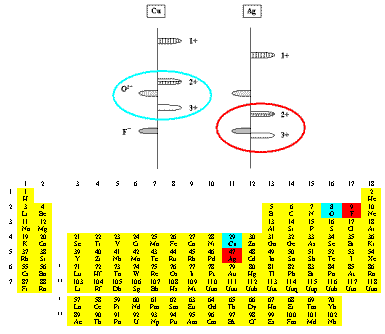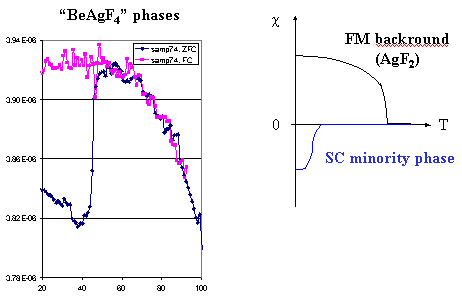


Normally if superconductivity were present in a material, it would be a simple matter to get confirmation by checking for a sudden drop in internal resistance, which shows up unambiguously even when the volume fraction is low. However, the fluoroargentates are highly reactive to air and moisture, and easily surface-reduced. As gold or platinum wires are attached, an insulating fluoride layer is formed, making validation very difficult. Further, a non-intrusive microwave cavity perturbation (MWCP) technique to measure conductivity has proven inconclusive.
Efforts are now underway to develop both a non-contact method for measuring conductivity and a theoretical model to predict behavior within the AgF system - as well as to apply external pressure to higher fluorides of silver.
UPDATE July 2008: Dr. Grochala has had second thoughts about drawing a conclusion of superconductivity for a minority phase embedded within a bulk simply from magnetic susceptibility readings. He states that this is tantamount to "searching [for] something amongst the weird noise...."
NOTE: An updated technical paper on this discovery is available in SOLID STATE COMMUNICATIONS, 130(1): 137-142 2004.
NOTE 2: From unreacted AgF2.
![]()

 BACK to the "Atypical" page at Superconductors.ORG
BACK to the "Atypical" page at Superconductors.ORG
 BACK to the "News" page at Superconductors.ORG
BACK to the "News" page at Superconductors.ORG